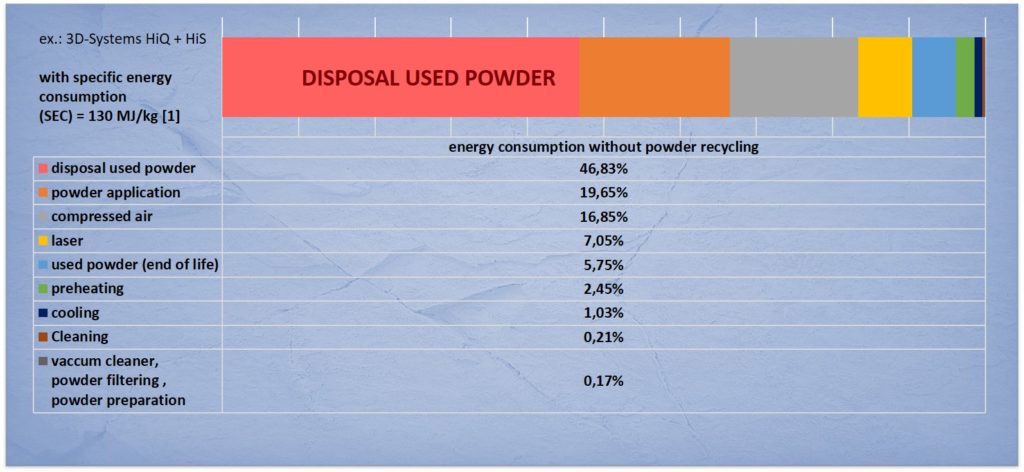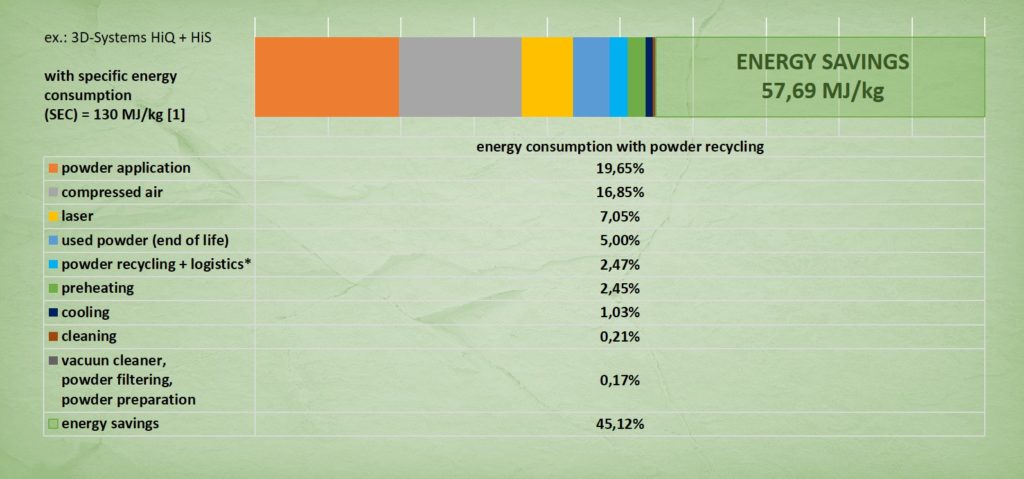Improvement of sustainability in the area of laser sintering
At laser sintering there is a big amount of resulting process-related powder waste because it is necessary to refresh the old used material with new fresh powder. This is important to guarantee the needed quality and mechanical strength of the produced components. Per buildjob the amount of needed new powder for the process is higher than the amount of parts taken out of this build job. The result is excessive used powder material.
In the following figure 1 you see the distribution of specific energy consumption in a laser sintering machine without the usage of powder recycling developed by GS-Pro GmbH [1]. In this picture it is clearly illustrated that the disposal of the used powder is the biggest point of the whole energy consumption of the LS process with around 45%. Thereby this wasted used powder is the biggest factor for the resulting CO2 emission of the laser sintering process.

To make the laser sintering process more sustainable the powder recycling and the resulting elimination of powder waste offers the biggest potential to save energy and CO2. Based on a real customer example it was calculated that the specific energy consumption of the powder recycling including the logistics is 3,2 MJ/kg.
Based on a specific energy consumption of 130 MJ/kg, the energy consumption of the LS process can be reduced by approx. 45% thanks to the low energy consumption of powder recycling including logistics and the resulting elimination of old powder disposal. All information about the detailed energy consumption of an LS process including powder recycling developed by GS-Pro is shown in Figure 2 below.

* The specific energy consumption for the powder recycling + logistics was calculated on a real customer example of the GS-Pro GmbH.
[1] Kellens K, Renaldi, Dewulf W, Kruth JP, Duflou, JR. Environmental Impact Modeling of Selective Laser Sintering Processes. Rapid PrototypingJournal 2014; 20/6:459-470.
